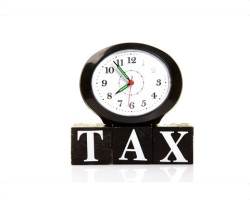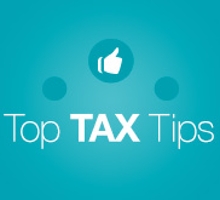New Dividend Allowance to Replace Dividend Tax Credit

From April 2016, a new Dividend Allowance is due to replace the current Dividend Tax Credit, with the headline rates of dividend tax due to change as a result.
Available to anyone with a dividend income, Chancellor of the Exchequer George Osborne announced in July’s emergency (summer) Budget that the new Dividend Allowance will allow you to earn £5,000 of dividend income, tax free, with you only having to pay tax on dividend income received above this amount.
Our clients should note that the new Dividend Allowance will not reduce your total income for tax purposes: any dividends you receive will continue to count towards your basic or higher tax rate bands, and may in turn increase the rate of tax payable on dividends received above the £5,000 tax-free allowance. The new allowance will simply mean you’re not liable to pay tax on the first £5,000 of any dividend income you receive.
Headline Rates
Under the new Dividend Allowance comes new headline rates payable on dividend taxes. When you receive dividend payments over £5,000 in a single tax year you’ll be liable to pay tax on these payments at the following rates:
- 7.5 percent in the basic rate band (currently 0 percent),
- 32.5 percent in the higher rate band (currently 25 percent),
- 38.1 percent in the additional rate band (currently 30.56 percent).
It’s important to note that basic rate tax payers are currently paying 0 percent on dividend payments over £5,000 as under the current Dividend Tax Credit system any tax liabilities above this amount are normally covered by the enclosed tax credit.
Because dividends are the most common, and preferred method for owners and investors in small and medium-sized businesses (SMEs) to pay themselves, dividends are often seen as the highest point of your income. For this reason, only those receiving a significant portion of dividend income will pay more tax under the new Dividend Allowance, as the above figures show. The Government predict that investors receiving a small to modest income from company shares will receive a cut in their dividend tax payments, or see no change in payments owed.
Dividend Exemptions
Despite the changes the new Dividend Allowance will bring, the exemptions available under the current system are due to remain.
Any dividends you receive into pension funds that are currently exempt from tax will continue to be received tax free. The same is true for dividends received on shares you may hold in an Individual Savings Account (ISA).
Experienced Tax Accountants
Here at Tax Agility we believe that if you’re an SME owner considering incorporation, you shouldn’t allow the rules of the new Dividend Allowance to affect your decision too much. Though the choice to incorporate should always be taken on a case-by-case basis, we recommend speaking with you accountant regarding any questions and concerns you may have.
To speak with a professional accountant to discuss the new Dividend Allowance, or for anything else, contact us today on 020 8780 2349 or get in touch with us via our contact page to arrange a complimentary, no obligation meeting.
The Importance of Cash Flow Management Can’t Be Undersold
In a recent report issued by The Institute of Chartered Accountants in England and Wales (ICAEW), small business start-ups were called upon to improve their cash flow management skills in an effort to avoid burning through their financial resources at too fast a pace.
This consideration came as a result of a survey conducted by the ICAEW whereby 23 percent of all small business advisors surveyed said that proper cash flow management is the biggest hurdle start-ups have to overcome in their business, but just 16 percent of start-up entrepreneurs who were asked the same question believed this to be among their chief concerns.
Ahead of proper cash flow management, the survey uncovered that 28 percent of the start-up entrepreneurs surveyed claimed that not getting enough customers and a failure of their business to make enough money caused them the most concerns.
Skewed Perceptions
These skewed perceptions and false assumptions of what allows a start-up to remain in business can be damaging to the prospects of, well, exactly that.
Referencing the report, director of business at the ICAEW Stephen Ibbotson noted that “Entrepreneurs’ perceptions of what they think will be the challenges they face as a start-up and the reality they actually encounter are very different. These false assumptions can often lead to businesses not fulfilling their maximum potential and at worse, failing completely.”
However, there is some cause for hope. Of the start-up entrepreneurs surveyed by the ICAEW, 68 percent agreed that working with an experienced business advisor is ‘extremely useful’ for any start-up business.
5.5 Million Private Sector Businesses
A Government report released earlier this month stated that there are now 5.4 million private sector businesses in the UK; a new record; with this figure accounting for 900,000 new businesses since 2010.
The report also stated that small businesses contribute 48 percent of all private sector employment, adding £1.2 trillion turnover to the British economy. With 75 percent of start-up entrepreneurs surveyed by the ICAEW claiming that starting up their business was more difficult than they originally thought it would be, the importance of proper cash flow management is more crucial than ever.
Experienced Start-Up Accountants
Here at Tax Agility we do more than just prepare your accounts. Our experienced start-up accountants can work with you to improve your cash flow management processes, all while providing appropriate advice surrounding the financials of your business. If your cash flow management system need an entire overhaul, we can even work with you to prepare budgets and cash flow projections to get you back on track.
To speak with a professional accountant to discuss how we can improve your cash flow management processes, or for anything else, contact us today on 020 8780 2349 or get in touch with us via our contact page to arrange a complimentary, no obligation meeting.
What is The Help to Buy ISA?
 The Help to Buy ISA (Individual Savings Account) is an ISA designed to help first time buyers get onto the property ladder by allowing them to save up to £200 a month into the ISA, with the promise that once you purchase a property (worth up to £450,000 in London, and £250,000 outside the capital) the government will increase your ISA savings by 25 percent, up to a total of £3,000.
The Help to Buy ISA (Individual Savings Account) is an ISA designed to help first time buyers get onto the property ladder by allowing them to save up to £200 a month into the ISA, with the promise that once you purchase a property (worth up to £450,000 in London, and £250,000 outside the capital) the government will increase your ISA savings by 25 percent, up to a total of £3,000.
This means if you save a total of £12,000 into your Help to Buy ISA, the government will top this up by the full £3,000 to give you a total of £15,000. You may make an initial deposit of £1,000 into your individual account, with your deposit also qualifying for a 25 percent government boost.
It should be noted that the Help to Buy ISA is only available to individuals 16 years old and above, and it’s only payable to those purchasing a property within the UK. Purchases of overseas properties do not qualify under the scheme. The Help to Buy ISA cannot be used if the property is to be rented (let) out.
Couples’ Advantage
One thing which makes the Help to Buy ISA especially tempting to couples and partners, married or not, is that they’re available on a one per person basis, rather than a one per home basis. This means that you and your spouse can both pay into your own Help to Buy ISA, saving a total of £24,000 between the two accounts, and receiving a total of £6,000 from the government.
This applies not just to romantically involved individuals, but also to friends and family members who are purchasing a home together.
When’s it Available, and for How Long
The Help to Buy ISA is available through banks and building societies across the UK from this Autumn (2015). New accounts will only be available for four years, but once you’ve opened an account there’s no limit on how long it can be held.
In terms of the ISA itself there is no minimum monthly deposit, but your bonus can only be collected (upon purchase of a home) once your qualifying savings reach the minimum amount of £400, meaning you have saved a total of £1,600, with the government topping this up to £2,000.
Under the scheme’s rules of saving a maximum of just £200 a month, it will take you just over four and a half years to qualify for the maximum bonus of £3,000, should you wish for it. If you and your partner, friend, or family member also have a Help to Buy ISA you may choose to ‘cash in’ sooner.
Experienced Personal Accountants
To speak with a professional accountant to discuss the Help to Buy ISA, and whether it’s a good scheme for you to partake in, contact us today on 020 8780 2349 or get in touch with us via our contact page to arrange a complimentary, no-obligation meeting.
Employment Allowance Increased by 50 Percent
Introduced in April 2014, Chancellor of the Exchequer George Osborne announced in July’s emergency (summer) Budget that the Employment Allowance is due to increase from £2,000 to £3,000 in April 2016.
This full 50 percent increase is designed to help small and medium-sized business (SME) owners to reduce the cost of their wage bill and to offset the increased costs they may start to occur due to the new mandatory National Living Wage (NLW), also to be introduced in April 2016.
 From next April the Employment Allowance will allow you to take up to £3,000 off your secondary Class 1 National Insurance Contributions (NICs) throughout the year until you receive back the full £3,000, or until the tax year comes to an end. You may not roll over any unused Employment Allowance to a new tax year, and you may only claim Employment Allowance for one PAYE (Pay as You Earn) scheme.
From next April the Employment Allowance will allow you to take up to £3,000 off your secondary Class 1 National Insurance Contributions (NICs) throughout the year until you receive back the full £3,000, or until the tax year comes to an end. You may not roll over any unused Employment Allowance to a new tax year, and you may only claim Employment Allowance for one PAYE (Pay as You Earn) scheme.
In the same Budget the Chancellor also announced that, from April 2016, if you’re the director and sole employee of your business you will no longer be eligible to claim the Employment Allowance on your own National Insurance bill.
Exclusions
You’re eligible to receive the Employment Allowance if you’re a business or charity (including, as is often the case, community amateur sports clubs) paying employers’ Class 1 National Insurance, or you’re an individual who employs a care or support worker.
There are several exclusions however, as secondary Class 1 National Insurance Contributions are known as ‘excluded liabilities’, meaning you cannot claim Employment Allowance on them if:
- - you’re personally employing somebody for household or domestic work, unless they’re a care or support worker,
- - you do more than half of your work in the public sector, unless you’re a charitable organisation,
- - you operate a service company which has only deemed payments of employment income under IR35.
How to Claim
The easiest, quickest, and arguably most efficient way to claim for the Employment Allowance is to do so through your accountant. Applying for the Employment Allowance is something your accountant will have done time and again for their clients, therefore even with the increased allowance providing a slight change to proceedings, your accountant will know how to get you started with ease.
If you don’t yet have an accountant (and you’re still looking around for the perfect pairing) you can claim for the Employment Allowance on your own behalf through your payroll software, if you have it, or by using HM Revenue and Customs (HMRC)’s Basic PAYE Tools.
Though directions will vary between different payroll softwares, the main thing you’re looking for is an option to ‘change employer details’ followed by a search for any field referencing the Employment Allowance, and a careful read of the options given to you.
Experienced Accountants
To speak with a professional accountant to discuss the new Employment Allowance, and how we help you to take advantage of it, contact us today on 020 8780 2349 or get in touch with us via our contact page to arrange a complimentary, no-obligation meeting.
Five Tax Saving Tips for Entrepreneurs
 Whether you’re a seasoned entrepreneur looking for your next challenge, or this is the first time you’ve traded as a start-up, when you begin a new venture you should waste no time in looking into ways in which you can save money on your tax bill at every step of the way.
Whether you’re a seasoned entrepreneur looking for your next challenge, or this is the first time you’ve traded as a start-up, when you begin a new venture you should waste no time in looking into ways in which you can save money on your tax bill at every step of the way.
Below we’ve complied five of our best tax saving tips for entrepreneurs. This list is perfect to get your new venture started on the right foot:
1) Keep Track of Your Expenses
There are few tax saving tips that will benefit entrepreneurs more in the long run than keeping track of your expenses from the very beginning (and your employees, should you have any). If you don’t keep track of your expenses from day one you’re only cheating yourself, as any expenses you fail to claim for will come directly out of your pocket.
Keep in mind that you can also claim for pre-trading expenses from up to seven years before you started your new venture, so long as the expenses are wholly and exclusively for the purpose of your new venture.
2) Gain Financing Through the SEIS
Launched in April 2012, the Seed Enterprise Investment Scheme (SEIS) makes it easy for start-ups to gain financing by encouraging individuals to support new ventures and small businesses by handing them significant tax savings in exchange for their investment.
Your start-up may also be able to benefit from the Enterprise Investment Scheme (EIS), which, though older, offers similar tax saving tips for entrepreneurs and investors alike.
3) Check if You Qualify for Research and Development Relief
If your new start-up is already paying Corporation Tax, you may be able to qualify for Research and Development Relief should you currently be undertaking qualifying revenue expenditure in a Research and Development (R&D) project that’s directly related to your start-up’s trade, or an area of trade which you’re considering expanding into.
Though it’ll never be your intention, if you make a loss during a tax year in which you’re claiming Research and Development Relief you’ll be given tax credits rather than Corporation Tax relief, credits which you can use in upcoming tax years.
4) Consider the Flat Rate Scheme for VAT
While not an obvious tax saving tip, the Flat Rate Scheme for Value Added Tax (VAT) can dramatically simplify the accounting process for your start-up while it grows.
Instead of having to write down the amount of VAT charged on every sale or purchase you make, when you opt to work under the flat rate scheme you won’t need to keep track of these figures, with you paying a flat rate of 4-14.5% overall VAT, depending on your start-up’s sector.
5) Meet With an Accountant
You don’t need to hire them, at least not right away, but meeting with a qualified, experienced accountant when you’re beginning a new venture will allow you to understand the importance of having your finances in order from the moment you start trading. You never know, they may even supply some tax saving tips on the house!
To speak with a professional accountant to discuss how you can save money on your tax bill with your new start-up, or for any other questions, contact us today on 020 8780 2349 or get in touch with us via our contact page to arrange a complimentary, no-obligation meeting.
What is the 24 Month Rule for Contractor Expenses?
 The 24 month rule for contractor expenses is a law that allows contractors to receive tax relief on travel expenses should you be required to travel from your home to a temporary working location for a period of 24 months (two years) or less.
The 24 month rule for contractor expenses is a law that allows contractors to receive tax relief on travel expenses should you be required to travel from your home to a temporary working location for a period of 24 months (two years) or less.
If you qualify for such relief it will be paid to you, tax free, directly by your employer. Under the law, travel expenses refer to all reasonable costs that are incurred as a direct result of you having to travel from your home (permanent residence) to your temporary working location.
The Rule Defined
The 24 month rule for contractor travel expenses only applies towards the first 24 months of you being asked to work from a temporary working location if the contract is expected to last for no more than 24 months.
If the contract signals a permanent move, or the move is to last for more than 24 months, no relief will be available for any period. If, however, halfway through a shorter contract your temporary location becomes permanent, or the contract is extended so the total time at your temporary location will exceed 24 months, relief is no longer available from that point on, but relief claimed up until that point may be kept.
Similarly, if you’re asked to work full-time from a temporary location for longer than 24 months, but several (or many) months into your contract at this location your time there is shortened to less than 24 months, you’ll be able to claim relief on the remaining months you have at your temporary location, but you won’t receive relief for the months up to that point, as at that time your contract was intended to be longer than the two year threshold.
What is a Temporary Working Location?
A temporary working location, for the purpose of the 24 month rule, is any location that you aren’t expected to be at (and ultimately aren’t at) for longer than two years.
You should note, however, that if your temporary working location is close enough to your permanent work location that it doesn’t prompt a dramatic change in the journey you take or the cost incurred to get there, with your journey from home remaining largely the same, you won’t be able to claim relief, regardless of how short your temporary working contract is.
Qualifying Exceptions
There are, of course, exceptions to the rule.
If you’re required to work one day a week from a temporary location for a period longer than 24 months you’ll still be able to claim relief for your weekly journeys to your temporary working location because you won’t be spending more than 40 percent of your working time in this temporary location (you’ll be spending just 20 percent, in this example).
If you’re in your job for less than two years, or you’re moved to a new permanent working location, you cannot claim relief as at every stage your working location is considered to be permanent.
How to Take Advantage of the 24 Month Rule for Contractor Expenses
Hiring an accountant to take care of (and organise) your contractor expenses is a necessary business investment if you wish to spend less time worrying about what you’re owed, and more time focusing on your work.
To speak with a professional accountant to discuss the the process of claiming for contractor expenses, or for any other questions, contact us today on 020 8780 2349 or get in touch with us via our contact page to arrange a complimentary, no-obligation meeting.
Three Advantages of Operating as a Sole Trader
 If you’re a small (or micro) business owner who plans on keeping things this way for the foreseeable future, there’s a good chance that setting up as a sole trader will be in your best interest going forward.
If you’re a small (or micro) business owner who plans on keeping things this way for the foreseeable future, there’s a good chance that setting up as a sole trader will be in your best interest going forward.
When you operate as a sole trader there are a large number of advantages that make it an ideal option for smaller businesses, both when it comes to setting up your business and registering with HM Revenue and Customs (HMRC), and once you’ve been trading below a certain threshold for a number of years.
Three of the most significant advantages of operating as a Sole Trader are:
Complete Control
When you’re a sole trader you have complete control over the running of your business, both in terms of your daily workload and the strategic decision making that takes place to determine the direction and (potential) growth strategy of your business.
It’s a common misconception that when you operate as a sole trader you can’t take on staff members. This isn’t true; though you’re the only entity (person or company) that can have a stake in your business, you can take on staff to help you complete your work. Of course, once you take on more than a couple of staff members you may find that incorporating into a Limited Company (Ltd) is a more tax-efficient alternative for your business.
Less Paperwork
Sole traders have to complete far less paperwork than those who run (and are thus director of) a Limited Company. As a sole trader you have no annual accounts to prepare, as your income and expenses are simply entered into an annual Self-Assessment tax return, where you’ll be required to pay Income Tax and National Insurance Contributions (NICs).
If you’ve not done so already you should consider hiring an accountant as soon as possible, as they’ll be able to walk you through the process of registering your business and applying for Self-Assessment in no time, leaving you free to work on making your business a success.
Easy Access to Your Income
One rarely spoken of advantage of operating as a sole trader rather than as a Limited Company is the fact that you have easy access to the revenue you make. Whether it’s paid into a business bank account or your personal account, you can extract this income with ease.
Directors of Limited Companies can only receive the income from their business as a salary, dividend, or loan once your company pays Corporation Tax on it, as the profits your company make are technically owned by your company, not you, a process which slows down your ability to access your income.
Small and Medium-Sized Business (SME) Accountants
There are, of course, several disadvantages of operating as a sole trader compared to operating as a Limited company, many of which we discussed in our recent article on whether you should operate as a sole trader or Limited Company.
To speak with a professional, experienced accountant to discuss whether the advantages of being a sole trader stack up for your business, contact us today on 020 8780 2349 or get in touch with us via our contact page to arrange a complimentary, no-obligation meeting.
Tax Tips and News for August 2015
This issue … Tax-free Childcare; Rent a Room; Help to Buy ISAs; Employment Allowance; August Questions and Answers; August Key Tax Dates
Tax-free Childcare
Tax-free childcare is part of the government's long-term plan to support working families and will provide up to 1.8m families across the UK with up to £2,000 of childcare support per year, per child, via a new online system. It was originally planned that the scheme would launch in Autumn 2015, but, as a result of a direct legal challenge from a small group of childcare voucher providers, development of the scheme was suspended. However, the Supreme Court has recently ruled that government proposals for delivering tax-free childcare are lawful, which means that the scheme can go ahead and is now expected to launch in 2017.
Here are some of the key points of the scheme:
- the scheme will be available for children up to the age of 12, and for children with disabilities up to the age of 17
- to qualify for tax-free childcare, parents will have to be in work, earning just over an average of £50 a week and not more than £150,000 per year. Unlike the current rules for employer-supported childcare, eligibility for tax-free childcare is not dependant on the employer offering the scheme
- self-employed parents will be able to qualify for tax-free childcare. For newly self-employed parents, there will be a 'start-up' period during which there will be no minimum income level requirement
- the scheme will be available to parents on paid sick leave and paid and unpaid statutory maternity, paternity and adoption leave
Anyone wishing to use the scheme will need to open an online account via the government website (www.GOV.uk) and pay in money to the account to cover the cost of childcare with a registered provider.
The government will top up accounts with 20% of childcare costs, up to a total of £10,000 - the equivalent of up to £2,000 support per child per year (or £4,000 for disabled children). So, for every 80p invested, the government will top up with a 20p contribution.
HMRC will re-confirm a claimant's circumstances every three months via a simple online process.
Where circumstances change, and the parent no longer wishes to pay into the account, it will be possible to simply withdraw any funds that have built up. However, where funds that have already attracted tax relief are withdrawn, the government will also withdraw its corresponding contribution.
There are no particular rules regarding when and how much can be saved in the new accounts. The scheme is designed to give as much flexibility as possible regarding savings. This means that parents can build up a balance in their account to use at times when they need more childcare than usual, for example, over the summer holidays.
Rent a Room
In the Summer Budget 2015, the government announced that the level of rent-a-room relief will be increased from the current level of £4,250 to £7,500 from April 2016. This means that from 6 April 2016, an individual will be able to receive up to £7,500 tax-free income from renting out a room or rooms in their only or main residential property. The relief also covers bed and breakfast receipts as long as the rooms are in the landlord's main residence.
To qualify under the rent-a-room scheme, the accommodation has to be furnished and a lodger can occupy a single room or an entire floor of the house. However, the scheme doesn't apply if the house is converted into separate flats that are rented out. Nor does the scheme apply to let unfurnished accommodation in the individual's home.
The rent-a-room tax break does not apply where part of a home is let as an office or other business premises. The relief only covers the circumstance where payments are made for the use of living accommodation.
If additional services are provided (cleaning and laundry etc.), the payments must be added to the rent to work out the total receipts. If income exceeds £4,250 a year in total, a liability to tax will arise, even if the rent is less than that.
There are two options if the individual is receiving more than the annual limit a year:
- the first £4,250 is counted as the tax-free allowance and income tax is paid on the remaining income
- renting the room is treated as a normal rental business, working out a profit and loss account using the normal income and expenditure rule
In most cases, the first option will be more advantageous.
The principal point to bear in mind is that those using the rent-a-room scheme cannot claim any expenses relating to the letting (e.g. insurance, repairs, heating).
To work out whether it is preferable to join the scheme or declare all of the letting income and claiming expenses via self-assessment, the following methods of calculation need to be compared:
- Method A: paying tax on the profit they make from letting worked out in the normal way for a rental business (i.e. rents received less expenses).
Method B: paying tax on the gross amount of their receipts (including receipts for any related services they provide) less the £4,250 exemption limit.
Method A applies automatically unless the taxpayer tells their tax office within the time limit that they want method B.
Once a taxpayer has elected for method B, it continues to apply in the future until they tell HMRC they want method A. The taxpayer may want to switch methods where the taxable profit is less under method A, or where expenses are more than the rents (so there is a loss).
The individual has up to one year after the end of the tax year when their income from lodgers went over £4,250 to decide the best option to take, so it is worth taking a bit of time to work out which route produces the lowest tax bill, we can help you with this.
Help to Buy ISAs
The new help-to-buy ISA, which is expected to be available from Autumn 2015, will enable first-time buyers to save up to £200 a month towards their first home. Investors will receive £50 from the government for every £200 saved, up to a maximum of £3,000. This means that the maximum that can be saved in a help-to-buy ISA is £12,000. The government bonus is added to this amount, so total savings towards the property purchase can be up to £15,000.
Accounts will be limited to one per person rather than one per home, which means that those buying together can both receive a government bonus. A couple will be entitled to hold an ISA each, meaning that a total of £24,000 could be built up across two accounts. With the addition of the government bonus, a total of £30,000 can be built up by a couple under the scheme.
An initial deposit of £1,000 may be made into the account, in addition to regular monthly savings limits. This initial deposit also qualifies for the 25% boost from the government.
The minimum bonus payable by the government will be £400 and the maximum £3,000 per person.
The bonus can be claimed once savings have reached the minimum amount of £1,600. Under the scheme it will take investors just over four and a half years to qualify for maximum bonus of £3,000, if desired.
Help-to-buy ISAs will be available to individuals aged 16 and over. The bonus will only be available to first-time buyers purchasing UK properties.
New accounts will be available for four years, but once opened, there will be no limit on how long an account can be held.
The bonus will be paid when the property is purchased. It will be available on home purchases of up to £450,000 in London and up to £250,000 outside London.
There are certain restrictions under the new scheme, including:
- help-to-buy ISAs cannot be used if the property is to be rented out;
- purchases of overseas property do not qualify under the scheme;
- only one help-to-buy ISA may be held by an individual; and
- investors cannot open a help-to-buy ISA and a normal cash ISA in the same tax year.
Employment Allowance
The Summer Budget 2015 contained two announcements affecting the employment allowance (EA).
Broadly, the EA potentially cuts every company's NIC payments by allowing businesses and charities to offset up to £2,000 (2015-16) against their employer (secondary) PAYE NIC liabilities.
From April 2016, eligible employers will be able to reduce their employer Class 1 NICs liability by up to £3,000 per tax year, instead of the current £2,000.
Secondary Class 1 NICs are 'excluded liabilities', and therefore do not qualify for EA, if they are incurred:
- employing someone for personal, family or household work, such as a nanny, au pair, chauffeur, gardener. Prior to 6 April 2015 this category also included care support workers, but from 6 April 2015 where all an employee's duties are performed for a person who needs support because of old age, mental or physical disability or past or present alcohol or drug dependence, illness or mental disorder any Secondary Class 1 NICs are not 'excluded liabilities';
- on deemed payments of employment income for workers supplied by personal and managed service companies;
- by an employer who has had a business, or part of a business, transferred to them in the relevant tax year and the payments relate to an employee employed (either wholly or partly) for purposes connected with the transferred business, or part business; or
- as a result of avoidance arrangements.
The Summer Budget 2015 also announced that from April 2016, companies where the director is the sole employee will no longer be able to claim the employment allowance.
August Questions and Answers
Q. I have realised that I made a mistake on my most recent VAT return. What should I do?
A. You can adjust your current VAT account to correct errors on past returns if the error:
- was below the reporting threshold (broadly, less than £10,000, or up to 1% of your box 6 figure (up to a maximum of £50,000);
- was not deliberate; and
- relates to an accounting period that ended less than 4 years ago.
When you submit your next return, add the net value to box 1 for tax due to HMRC, or to box 4 for tax due to you. Make sure you keep good accurate records relating to the adjustment.
Q. A friend has told me that I may be entitled to a larger state pension if I pay Class 3A national insurance contributions. What are they and how do I know if paying them is worthwhile?
A. Class 3A is a new voluntary type of national insurance contribution (NIC) that is being introduced from 12 October 2015. Broadly, between then and 5 April 2017 certain people will be able to make a contribution to top up their state pension by up to £25 per week. Men born before 6 April 1951 and women born before 6 April 1953 will be eligible to make top up payments. The cost of the contribution will depend on how much extra pension the applicant wants to qualify for (between £1 and £25 per week), and how old they are when they make the contribution. A top up calculator is available on the GOV.uk website at www.gov.uk/state-pension-topup/y. The calculator will help you work out whether it is worthwhile you making Class 3A contributions.
Q. I have assets worth around £600,000, including my home. I am single, have never been married and have no children. I intend leaving my estate to my siblings. Will they qualify as 'direct descendants' and, in turn, will I qualify for the extra £175,000 family home inheritance tax allowance that was announced in the Summer Budget?
A. The draft legislation and guidance on this issue states that the relief will only be available where the family home is passed to children. This includes stepchildren, adopted and foster children, plus grandchildren. Therefore the family home allowance will not be available.
August Key Tax Dates
2 - Last day for car change notifications in the quarter to 5 July - Use P46 Car
19/22 - PAYE/NIC, student loan and CIS deductions due for month to 5/8/2015
We are committed to ensuring none of our clients pay a penny more in tax than is necessary and they receive useful tax and business advice and support throughout the year.
If you need further assistance just let us know – we're here to help!
Contact us today on 020 8780 2349 to discuss how any of the above affects your personal or business finances or get in touch with us via our contact page to arrange a complimentary, no-obligation meeting.
This blog is a general summary. It should not replace professional advice tailored to your specific circumstance.
New £500,000 Inheritance Tax Threshold from 2017
 Chancellor of the Exchequer George Osborne announced during the emergency (summer) Budget earlier this month that the current Inheritance Tax threshold is set to increase from 2017, adding an extra £175,000 allowance per-person on homes left to children or grandchildren.
Chancellor of the Exchequer George Osborne announced during the emergency (summer) Budget earlier this month that the current Inheritance Tax threshold is set to increase from 2017, adding an extra £175,000 allowance per-person on homes left to children or grandchildren.
This figure will be added to the current tax-free threshold of £325,000, for a total per-person, tax-free allowance of £500,000. As both allowances are transferable between your spouse or partner (should you die before your spouse or partner, they will receive your allowance on top of their own), if you choose to pass your home down to your children or grandchildren from 2017 you’ll be able to pass on up to £1 million free from Inheritance Tax.
Speaking at the House of Commons on 8 July, Mr. Osborne said:
“The wish to pass something on to your children is about the most basic, human and natural aspiration there is. Inheritance tax was designed to be paid by the very rich. Yet today there are more families pulled into the inheritance tax net than ever before – and the number is set to double over the next five years. It’s not fair and we will act.”
Tax Rate to Remain
Under the new rules, estates valued between £1-2 million will pay tax at 40 percent over the £1 million mark, or the £500,000 mark for single parents or grandparents if their spouse or partner used their allowance previously, or didn’t pass their unused allowance on to them.
It should be noted that the new £500,000 per-person threshold will ‘taper’ away for estates worth more than £2 million. With that said, should you choose to downsize your home you won’t lose your tax-free allowance from your previous property.
Current Inheritance Tax System
Under the current system, individuals receive a tax-free threshold of £325,000, with spouses and partners being able to combine their allowances. The only difference between the current system and the new one, due to be phased in in 2017, is the new system adds an extra £175,000 allowance per person, thus increasing it to £500,000.
The original £325,000 threshold is fixed until the end of the 2020-21 tax year, after which there is potential for its renegotiation.
In its current form, Britain has some of the strictest Inheritance Tax rates in the developed world, with The Telegraph reporting that a parent splitting their £1 million estate (£800,000 property, £200,000 cash) between two children currently results in a £270,000 tax bill. Under the new system, this bill will reduce to £200,000 in the same scenario, making it lower than the Inheritance Tax paid on an equivalent inheritance in both France and Japan.
More Information on Inheritance Tax Threshold
To speak with a professional accountant to discuss what the new Inheritance Tax threshold means for you, your property, and those you wish to inherit it, contact us today on 020 8780 2349 or get in touch with us via our contact page to arrange a complimentary, no-obligation meeting.
The Advantages of Completing Your Tax Return Early
 Nobody enjoys the hassle of having to file their Tax Return, especially when you’ve left it to the last minute and find yourself having to rush around (amid panicked phone calls to your accountant) to get everything sent over to HM Revenue and Customs (HMRC) before the 31 January, online, or 31 October, paper, deadline.
Nobody enjoys the hassle of having to file their Tax Return, especially when you’ve left it to the last minute and find yourself having to rush around (amid panicked phone calls to your accountant) to get everything sent over to HM Revenue and Customs (HMRC) before the 31 January, online, or 31 October, paper, deadline.
If, as a small or medium-sized (SME) business owner, you recently received a letter in the post telling you it’s time for you to complete your annual Tax Return, you may want to consider getting it done early this year in order to avoid the otherwise inevitable rush.
And if that doesn’t convince you, maybe the following four points will:
You’ll Get a Tax Refund Faster
If you complete your Tax Return early, and pay any tax owed, you’ll receive a tax refund much sooner (assuming you’re owed tax back) than if you submit your Tax Return and money owed in January; especially towards the end of the month nearing the 31 January online deadline.
There’s no downside to receiving a tax refund sooner; and though interest rates may not be the highest they’ve ever been, the sooner you receive your tax return the sooner it can be sat back in your bank account earning interest!
You Can Manage Your Cash Flow Better
With that said, if you complete your Tax Return early you don’t have to pay the tax you owe until the 31 January deadline (and the 31 July second payment deadline, should this apply to you).
This buffer between filing and payment allows you to manage your cash flow better, as, depending on the size of your tax bill, you can make a budget to ensure you put a certain amount aside each month up until January ahead of making your payment.
You’ll Avoid Any Potential Penalties
If you file your Tax Return late (or send a payment late) you’re automatically issued with a £100.00 penalty; even if you miss the mark by just a few hours.
For this reason, when you submit your Tax Return and payment early you’ll avoid a wealth of expensive fees and penalties that could have otherwise come your way if you’d filed late, including a:
- £100.00 late filing penalty,
- £10.00 daily penalties after 3 months, up to £900.00,
- £300.00, or 5 percent of your tax due after 6 months,
- £300.00, or 5 percent of your tax due after 12 months.
You Can (Potentially) Use a Tax Code
If you’re a small business owner who owes less than £3,000 in tax payments and you complete your Tax Return by 30 December, you can opt to have your tax collected through your tax code over the coming year in a bid to spread out your payments.
If your business’s small size means you’re currently receiving tax credits or benefits, consider submitting your Tax Return before 31 July in order to send the Tax Credit Office real, up to date income figures (rather than estimates) to help you receive the tax credits or benefits you’re owed sooner.
Experienced Tax Accountants
To speak with a professional to discuss how to complete your Tax Return (both the collection and submission process), or for any other reason, contact us today on 020 8780 2349 or get in touch with us via our contact page to arrange a complimentary, no-obligation meeting.










